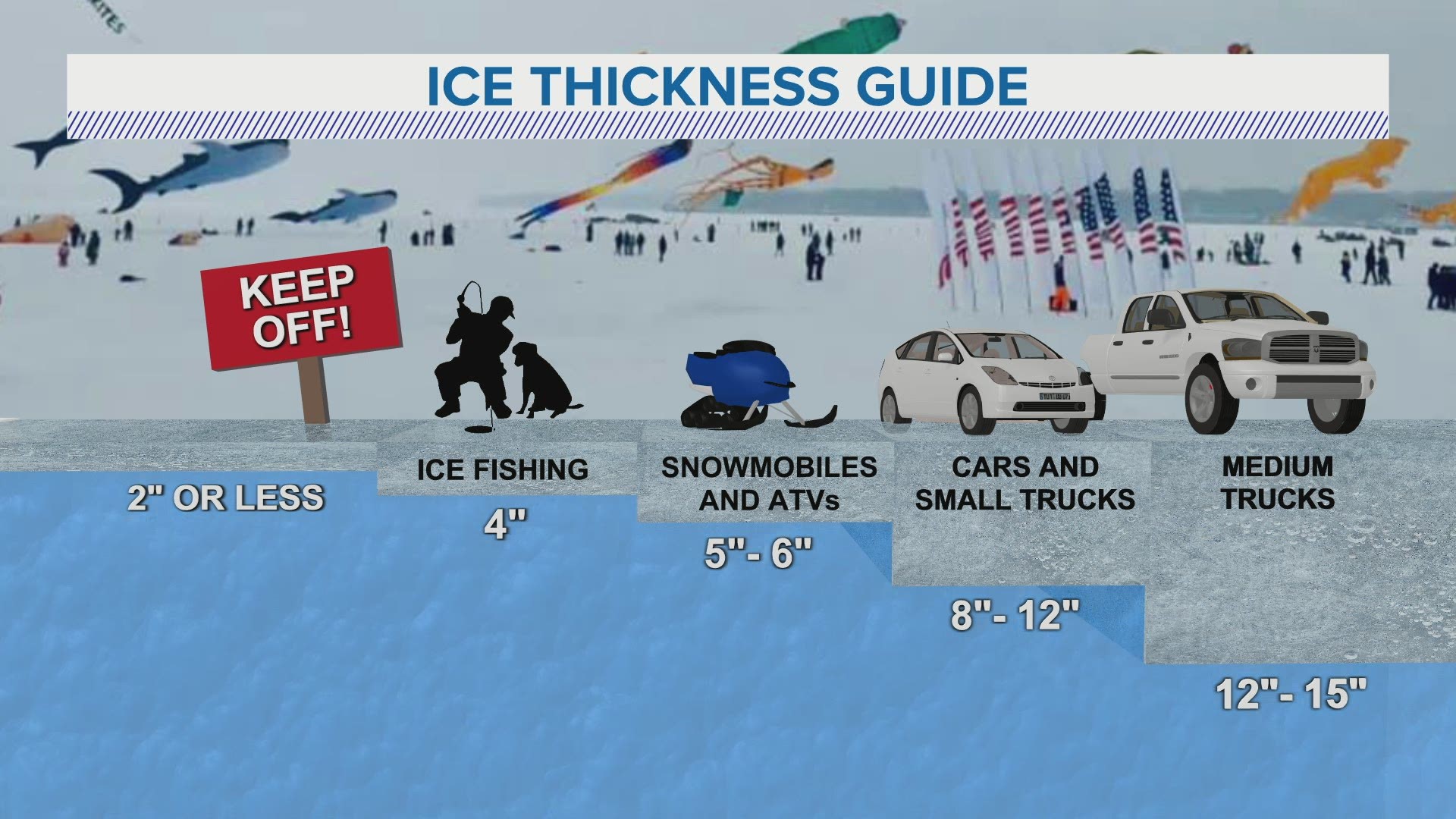DES MOINES, Iowa — It's that time of year where ice fishing and winter sports are in full swing across Iowa.
The last few weeks of January and first few weeks of February often mark the coldest stretch of the year in the Midwest.
Although iced-over lakes and ponds can make for some good outdoor fun, ice can present a lot of dangers, too.
These dangers often arise when the ice isn't very thick, either at the beginning of winter or near the end of the season.
Water has a higher heat capacity than land, meaning it can hold more heat for a longer period of time.
This explains why water takes so long to freeze up on the front end of winter, but also why ice is slow to melt in the spring time.
Bigger bodies of water, like Iowa's Great Lakes, take a longer time to melt than smaller ponds and streams.
Once they're frozen, however, it's usually fairly solid.
Essentially, smaller bodies of water are more susceptible to thinner ice, faster melting, and greater dangers associated with ice.
Before going out on the ice, it's a good idea to know its thickness.
If ice is less than four inches thick, it's best to stay off it altogether.
Any small crack can cause big issues.
As ice gets thicker, though, it can handle more weight- up to a point where large trucks and SUVs can even drive out over the frozen lake without any problems.
When out on the ice, it's a good idea to have plenty of warm weather gear on hand, including layers of light, loose-fitting clothing.
It's also easy to access a weekly fishing report and ice thickness update from the Iowa Department of Natural Resources.

